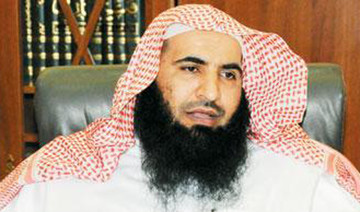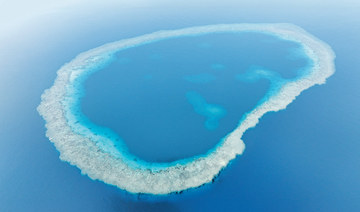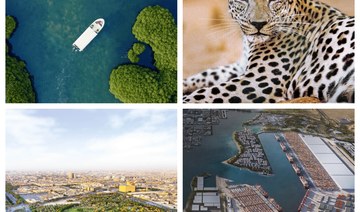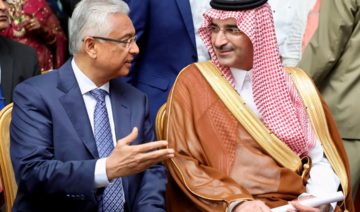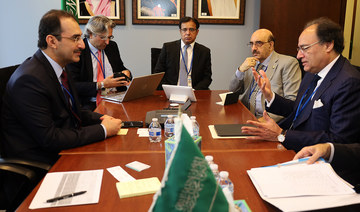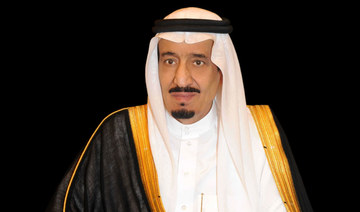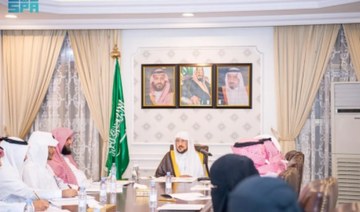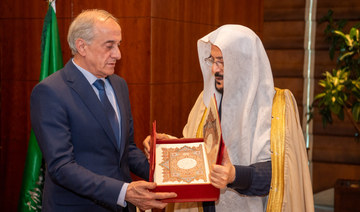JEDDAH: In 2007, King Abdullah held a groundbreaking meeting with Pope Benedict XVI. A year later, he invited religious scholars, media representatives, academics and intellectuals from around the globe to take part in three-day interfaith talks in Makkah. During that meeting, the parameters of the discussions Muslims should be having with people of other faiths were outlined. Since then, Saudi Arabia’s efforts to bring peace to the world have not stopped, nor will they end till the globe is free of terrorism and extremism. Crown Prince Mohammed bin Salman has said in interviews that he wants to return Saudi Arabia to a “moderate Islam” that is more open to the world and tolerant of other faiths. In November 2017, King Salman held talks in Riyadh with Lebanon’s Maronite Christian Patriarch Bechara Boutros Al-Rahi.
Both men stressed the importance of the role of all religions and cultures in promoting tolerance, renouncing violence, extremism and terrorism, and achieving security and peace for the peoples of the region and the world. Al-Rahi later also met the crown prince.
In April this year, the king received at his office at Al-Yamamah Palace in Riyadh the chairman of the Pontifical Council for Interfaith Dialogue at the Vatican, Cardinal Jean-Louis Tauran, and his accompanying delegation.
During the meeting, they again stressed the important role that followers of all religions and cultures have to play in renouncing violence, extremism and terrorism, and achieving global security and stability. In March, Crown Prince Mohammed met political and religious leaders on the second day of his landmark visit to the UK. Archbishop of Canterbury Justin Welby, the spiritual leader of the Anglican Communion of millions of Christians, received the crown prince at Lambeth Palace in central London, where the two men talked for an hour.
They also viewed a selection of early texts from the Christian, Muslim and Jewish faiths, including fragments of a Qur’an manuscript found in a Birmingham University library in 2015, which are thought to be among the world’s oldest.
The crown prince extended an invitation to the archbishop to visit Saudi Arabia, according to senior sources at the Saudi Embassy in the UK and the Ministry of Foreign Affairs. They added that the meeting had been “very positive and very pleasant.” Three weeks later, the crown prince met several US religious leaders in New York.
During those meetings, the crown prince stressed the importance of respect between followers of all religions and the need to promote the positive values of coexistence and tolerance. A few days before his trip to the UK, the crown prince met Coptic Pope Tawadros II at Cairo’s largest cathedral, and invited Egyptian Christians to visit Saudi Arabia, saying that all Coptic Christians are welcome.
Meanwhile, the secretary-general of the Muslim World League, Mohammed bin Abdul Karim Al-Issa, and the Vatican’s Cardinal Tauran signed a cooperation agreement in April for achieving common objectives. Islamic researcher Sheikh Ahmed Al-Ghamdi said interfaith dialogue is a necessary human, religious and cultural endeavor that will help to curb terrorism and extremism. A former president of the Makkah branch of the Commission for the Promotion of Virtue and Prevention of Vice — sometimes referred to in the media as the “religious police” — he believes that such discussions should be widened to include more followers of other religions to ease hostilities and thwart terrorism, sectarianism and racism.
“We need to widen the circle of interfaith dialogue between societies in order to spread acquaintance, create rapprochement and correct the distorted image of Islam,” he said.
“Dialogue between followers of all the divinely revealed religions — Judaism, Christianity and Islam — can bring peace to the world. Moreover, talking with followers of Buddhism, Hinduism, Confucianism and other religions can also widen the space for peace.
Saudi Arabia taking lead in interfaith dialogue
Saudi Arabia taking lead in interfaith dialogue
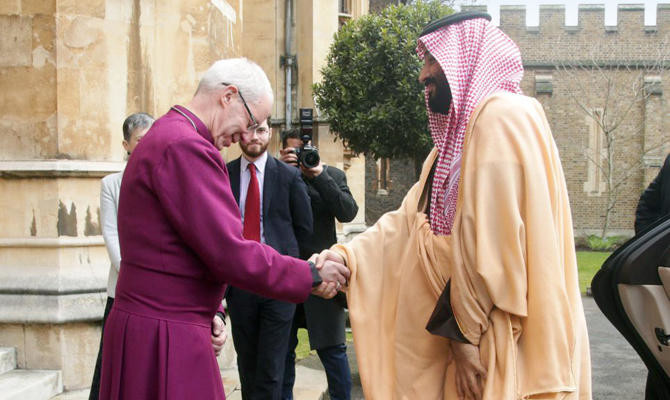
- The crown prince stressed the importance of respect between followers of all religions and the need to promote the positive values of coexistence and tolerance
How forest conservation is helping Saudi Arabia achieve its green objectives

- By planting trees and protecting forests, the Kingdom promotes biodiversity and sustainable development
- Forests provide habitats for hundreds of animal species and play a pivotal role in combating climate change
JEDDAH: With its low annual rainfall, much of Saudi Arabia’s vast landscape is covered by desert, broken by occasional oases. In its mountainous regions, valleys, and along its coastline, however, the Kingdom is home to multiple forest ecosystems.
Forests play a pivotal role in combating climate change by acting as carbon sinks — storing carbon both above and below ground, thereby extracting it from the atmosphere, where it would otherwise contribute to the greenhouse effect.
Their significance in climate change adaptation and mitigation is also underscored by their role in creating local microclimates, providing habitats for a wealth of biodiversity, locking in freshwater resources, and preventing flash floods, landslides, and soil degradation.
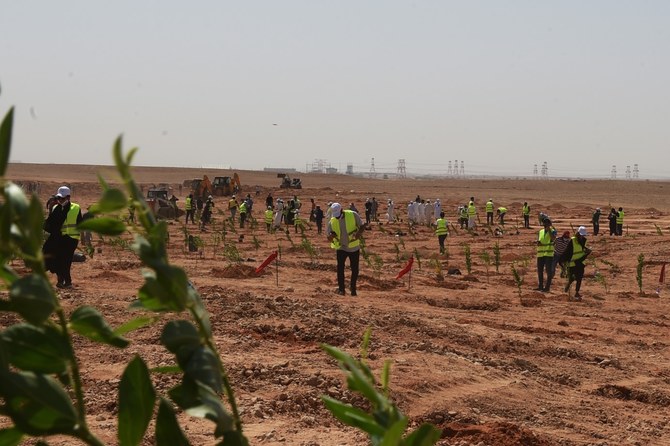
Saudi Arabia’s National Center for Vegetation Cover Development and Combating Desertification is at the forefront of implementing the Kingdom’s strategic goals outlined in Vision 2030.
“Forests play a crucial role in mitigating climate change,” Samir Malaika, assistant director-general of the general administration of forests at NCVC told Arab News. “Saudi Arabia’s dry climate and geography hinder its efforts to conserve forests and promote plant growth.
“With most areas receiving minimal rainfall, forests struggle to thrive. The escalating impact of climate change exacerbates environmental stressors, hampering forest growth and regeneration efforts.”
The NCVC aims to elevate living standards by reducing pollution and facilitating the restoration of degraded environments. It is also committed to building resilience against natural hazards and defenses against harmful pests that could pose risks to vegetation.
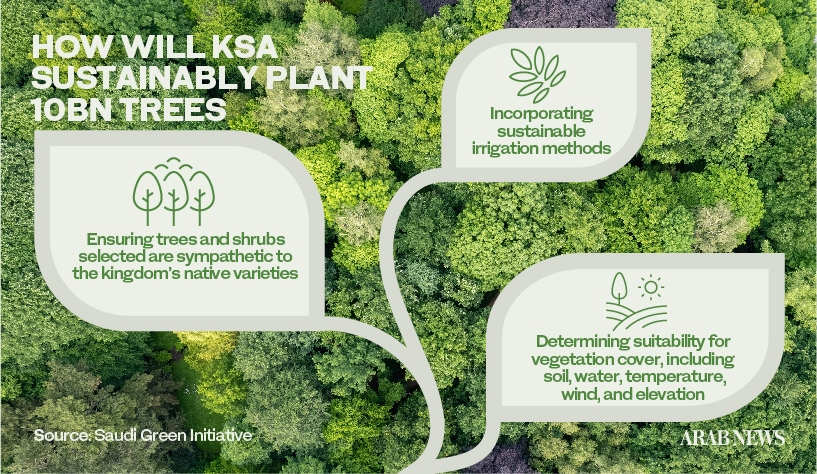
Simultaneously, it prioritizes the sustainable development of the Kingdom’s natural resources. With seven ongoing initiatives, it aims to ensure the responsible and lasting utilization of resources in line with the nation’s sustainability objectives.
Among the center’s key initiatives under the Saudi Green Initiative is a scheme to plant some 10 billion trees — representing a significant step in the Kingdom’s reforestation effort.
The initiative for forest management and sustainable development by 2030 underscores a long-term commitment to nurturing and preserving woodland environments.
The phased approach to preserving and restoring vegetation in pasture areas reflects a strategic focus on addressing the specific ecological challenges faced by different ecosystems.
Opinion
This section contains relevant reference points, placed in (Opinion field)
Furthermore, the initiative for developing vegetation and infrastructure for 50 national parks highlights the importance of creating protected natural spaces while promoting biodiversity and ecotourism.
Moreover, the initiative to plant 7 million wild trees in royal reserves demonstrates a targeted effort to enhance the natural habitats within these pristine areas.
Engagement by the public and private sectors in vegetation development and combating desertification underscores the collaborative approach needed in order to achieve sustainable environmental goals.

By harnessing the collective resources and expertise of various stakeholders, these initiatives aim to create a resilient and thriving ecosystem that benefits both present and future generations.
According to Malaika, Saudi Arabia boasts a forest coverage spanning approximately 2,768,050 hectares, primarily concentrated in the southern and southwestern regions, along riverbeds, and on the coastlines of the Red Sea and the Arabian Gulf.
These forest ecosystems are categorized into three primary types: mountain, valley, and mangrove.
Mountain forests
Mountain forests are predominantly located in the region spanning the Hijaz Mountains in Taif to Jazan in the south. These areas have neutral soil acidity and receive the highest rainfall and humidity levels, particularly evident in the southwest with denser forest cover.
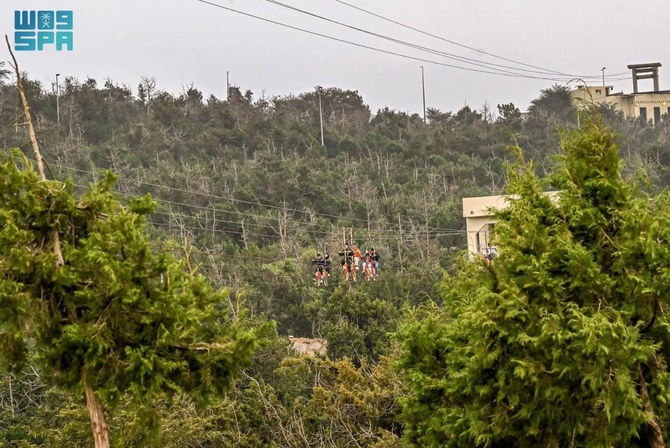
Forests are made up of several Juniperus plant species, typically found at altitudes of 2,000 meters and above. Additionally, Olea chrysophylla forests, characterized by wild olive trees with golden leaves, thrive at altitudes of 1,500 to 2,000 meters.
At lower altitudes, between 1,000 to 1,500 meters, Acacia plant species dominate the landscape.
Notably, terraced agriculture is a common feature of mountainous regions, facilitating crop fruit tree cultivation while aiding in water retention and soil protection. However, improper management can lead to land degradation, adversely affecting the surrounding forests.
DID YOUKNOW?
• Saudi Arabia is home to more than 63 unique ecosystems, ranging from mountainous regions to coastal lowlands.
• The Kingdom boasts a diverse array of wildlife, including 78 terrestrial mammal species and 499 species of bird.
• Coral reefs in Saudi Arabian waters host an impressive 266 species, contributing to marine biodiversity.
• With more than 6,500 species, Saudi Arabia’s invertebrate population testifies to the richness of its ecosystems.
• Saudi Arabia boasts three distinct forest ecosystems: mountain forest, valley forest, and mangrove forest.
Valley forests
Saudi Arabia’s topography features 179 valleys distributed across the country. Valley forests, mainly situated in semi-arid regions, are characterized by species such as Acacia ehrenbergiana, Acacia tortilis, Maerua crassifolia, several species of Commiphora, and Salvadora persica.
Additionally, oases and valleys are abundant with various Acacia species, Ziziphus spina-christi, Salvadora persica, Haloxylon persicum, trees, shrubs, and Hyphaene thebaica.
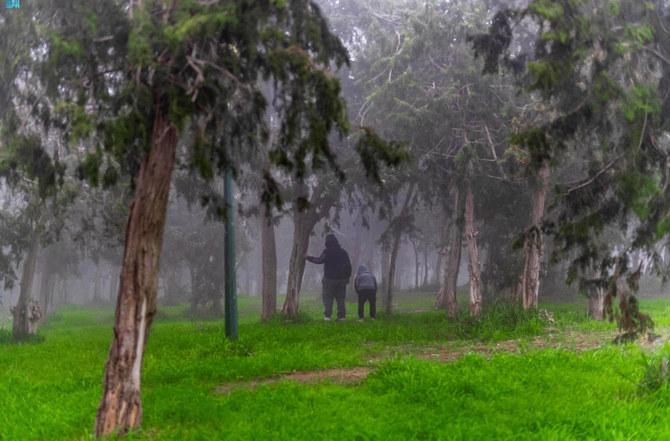
Mangrove forests
Mangroves and coastal ecosystems tolerant to saltwater are predominantly located along the Red Sea coast, with other stretches found along the Arabian Gulf coast.
Despite the lack of comprehensive forest data, studies indicate significant degradation of the mangrove ecosystem.
Avicennia marina is the most prevalent species in mangrove forests, with Rhizophora mucronata being less common.

Besides these natural forests, the Kingdom is also host to many urban and cultivated woodlands in its parks and residential neighborhoods, planted to provide shade, reduce temperatures, and beautify city streets.
Despite the Kingdom’s diverse ecosystems, it faces significant challenges in preserving and expanding its forests, including limited resources, poor local management, insufficient nursery production to meet seedling demand, a lack of awareness about dumping and unauthorized grazing, and other irresponsible human activities.
The Saudi National Center for Wildlife is working to protect, develop, and restore ecosystems and biodiversity around the Kingdom, in addition to addressing risks related to plant and animal life.
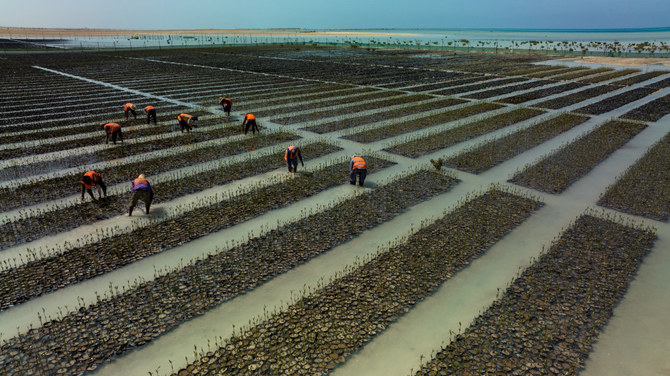
According to Abdulmanea Al-Qahtani, invertebrates department director at the NCW, the Kingdom has 63 distinct ecosystems, encompassing a diverse range of landscapes, including mountains, plains, deserts, valleys, forests, seas, wetlands, plateaus, coastal areas, and marshes, all teeming with biodiversity.
The Kingdom is home to 78 species of terrestrial mammal, 499 species of bird, 136 species of reptile, seven species of amphibian, and more than 6,500 species of invertebrate.
In its waters, the Kingdom also offers habitats to 19 species of marine mammal, eight species of freshwater fish, 1,248 species of saltwater fish, and 266 species of coral
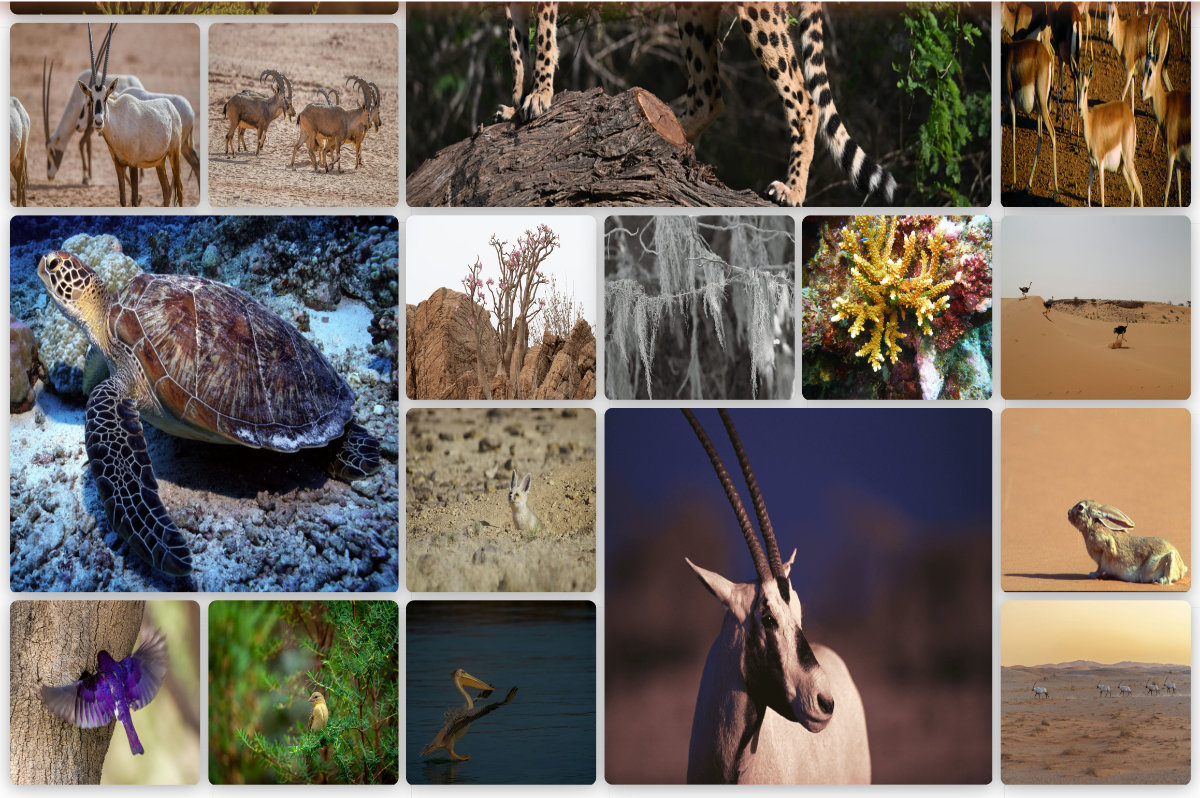
The Saudi Green Initiative, launched by Crown Prince Mohammed bin Salman in 2021 under the Vision 2030 framework, aims to tackle threats to this rich biodiversity and foster sustainable development.
Key goals include transitioning to a sustainable economy by reducing carbon emissions, boosting renewable energy production, and bolstering conservation efforts.
Additionally, the initiative aims to enhance environmental protection, promote green technologies, and create green jobs to drive economic diversification and growth.

Saudi fund signs two loan agreements, inaugurates Hulhumale Island development in Maldives

- Al-Marshad participated in the partial inauguration of the Hulhulmale Island Development Project
MALE: CEO of the Saudi Fund for Development Sultan bin Abdulrahman Al-Marshad signed on Friday two development loan agreements with the Maldives’ Minister of Finance Dr. Mohammed Shafiq. These agreements will contribute to financing the Velana International Airport development project with a value of $100 million and the healthcare sector development project in the Maldives with a value of $50 million, provided by fund.
Additionally, Al-Marshad participated in the partial inauguration of the Hulhulmale Island Development Project, which the SFD is contributing to financing through a soft development loan worth $80 million. The event was also attended by Saudi Ambassador to the Maldives Matrek bin Abdullah Al-Ajalin.
King Salman issues royal order to promote 26 judges

RIYADH: King Salman issued a royal order on Friday to promote 26 judges at the Board of Grievances, Saudi Press Agency reported.
President of the Board of Grievances and Administrative Judicial Council Sheikh Khalid bin Mohammed Al-Yousef said that the royal order confirmed the keenness of the Kingdom’s leadership to support the judiciary to develop its performance and achieve quality and efficiency.
Earlier this month, the king issued a royal decree on Saturday to appoint 261 investigative lieutenants at the Ministry of Justice’s Public Prosecution.
Makkah workshop focuses on geospatial data

- Several distinguished surveyors were also honored for their outstanding performance in recent training sessions
MAKKAH: “The Future of Geospatial Information Using Artificial Intelligence Techniques” was the title of a workshop hosted at the Makkah municipality theater recently.
Held by the Kingdom’s Geographic Information Systems section, the event included a presentation that highlighted the project’s services and achievements, along with its aims of enhancing land inventory and documentation efficiency in Makkah.
It also reviewed the use of artificial intelligence in information analysis and problem-solving. Several distinguished surveyors were also honored for their outstanding performance in recent training sessions.
Saudi Islamic affairs minister inaugurates mosques

- Dr. Abdullatif Al-Asheikh said: “Contributing to building and caring for mosques is a good deed that earns people rewards”
ARAR: Saudi Minister of Islamic Affairs, Dawah and Guidance Dr. Abdullatif Al-Asheikh inaugurated the Al-Hanouf Al-Zwain and Ali Mohammed Al-Melhem mosques in the city of Arar as part of a visit to the area to inspect work progress.
The ministry’s undersecretaries and several department directors, as well as the director of the ministry’s branch in the Northern Borders region, Fahd bin Sulaiman Al-Khalifa, attended the event.
Al-Asheikh toured the two mosques, and was briefed on their construction in the Salmani architectural style, as well as their associated facilities and services.
He said: “Contributing to building and caring for mosques is a good deed that earns people rewards.”
The minister added that the Kingdom, since the era of King Abdulaziz until today under King Salman and Crown Prince Mohammed bin Salman, has given great importance to mosques.
Al-Asheikh prayed for the reward of those who built the mosques, and for the maintenance of Saudi Arabia’s security and stability.


